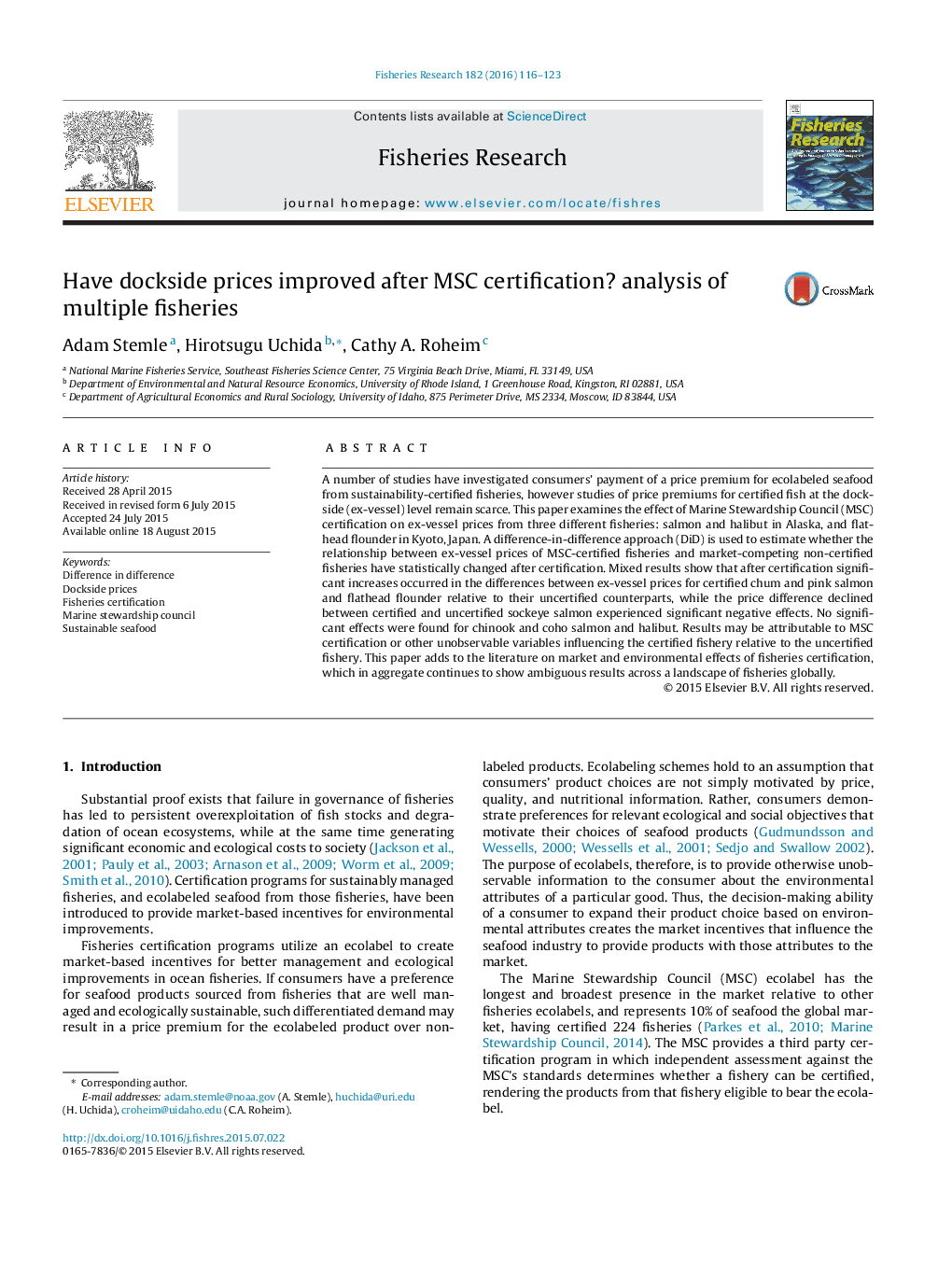| Article ID | Journal | Published Year | Pages | File Type |
|---|---|---|---|---|
| 4542672 | Fisheries Research | 2016 | 8 Pages |
•Little is known about effect of MSC certification on dockside level prices.•Exvessel prices for salmon, flounder and halibut in US, Canada, and Japan studied.•Certified fisheries are analyzed relative to comparable non-certified fisheries.•A difference-in-difference statistical methodology is used.•Mixed results show dissimilar patterns of effects across fisheries.
A number of studies have investigated consumers' payment of a price premium for ecolabeled seafood from sustainability-certified fisheries, however studies of price premiums for certified fish at the dockside (ex-vessel) level remain scarce. This paper examines the effect of Marine Stewardship Council (MSC) certification on ex-vessel prices from three different fisheries: salmon and halibut in Alaska, and flathead flounder in Kyoto, Japan. A difference-in-difference approach (DiD) is used to estimate whether the relationship between ex-vessel prices of MSC-certified fisheries and market-competing non-certified fisheries have statistically changed after certification. Mixed results show that after certification significant increases occurred in the differences between ex-vessel prices for certified chum and pink salmon and flathead flounder relative to their uncertified counterparts, while the price difference declined between certified and uncertified sockeye salmon experienced significant negative effects. No significant effects were found for chinook and coho salmon and halibut. Results may be attributable to MSC certification or other unobservable variables influencing the certified fishery relative to the uncertified fishery. This paper adds to the literature on market and environmental effects of fisheries certification, which in aggregate continues to show ambiguous results across a landscape of fisheries globally.
